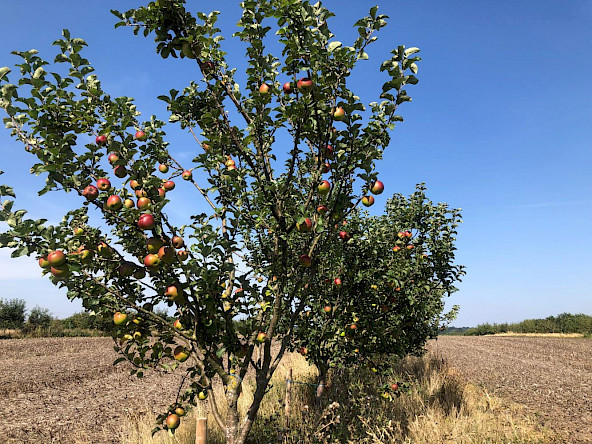Farming is at a crossroads. The pressure on land use is growing, and farmers are increasingly expected to produce nutritious, affordable food alongside helping to tackle climate change, reverse the decline in nature and give people access to the countryside. It’s a world away from my youth on a livestock farm in the Midlands where farming conversations were dominated by who had the highest yields. But there’s a way to help meet these targets: trees on farms.

Why is agroforestry important?
It is exciting and reassuring to see the growth in nature-friendly farming practices and the hint from UK governments that they accept farmers need support to deliver this array of non-marketable goods. Agroforestry, the deliberate integration of trees into farming systems, has a clear role to play in balancing these complex demands. We know trees on farms can deliver a wide range of outputs and benefits. It is essential that farms adapt to climate change if they are to be able to continue to produce food. Trees provide shade and shelter for animals, enhance water management and promote soil health. But they do this whilst also capturing carbon and helping meet societal-wide tree planting targets. They boost nature recovery, providing much needed diversity and connective habitat in what can be a tough environment for nature. Investing in agroforestry will enable farmers and growers to diversify into new markets of locally produced fruit and nuts.
Visit the UK’s first Agroforestry Show
So how can we collectively make agroforestry mainstream? Currently it is estimated that less than 5% of the UK farmed area consists of intentionally designed agroforestry systems. We know lack of knowledge and expertise about agroforestry is a major barrier. To help address this, the Woodland Trust and the Soil Association are organising the UK’s first Agroforestry Show this September. We’re excited to be bringing together farmers, foresters, tree nurseries, advisers, policy makers and food suppliers to see, discuss and share ideas and experiences. This packed two-day programme includes:
- guided walks to see agroforestry in practice as well as demonstrations and a drop-in design clinic;
- discussions about how trees can support good welfare and performance for farmed livestock, including protections against extreme weather patterns and optimising the use of home-grown feedstuffs. Farmers and researchers will talk about the major benefits of re-connecting livestock with tree-enriched landscapes, including shade, shelter, nutrition and medicine;
- a talk from Andy Dibben, head grower at Abbey Home Farm and passionate silvohorticulturist sharing his experience of incorporating trees into his organic veg system;
- fruit and nut production experts explaining the opportunities to produce more UK-grown fruits and nuts through agroforestry;
- a chance to explore how collaboration can overcome some of the biggest barriers by sharing land, expertise and skills;
- information on the funding opportunities available via government schemes or from emerging natural capital markets and private finance.
Grow your knowledge, ask the experts and be inspired at Eastbrook Farm, Swindon, 6-7 September. Book your tickets now.
Read more on how agroforestry can deliver for nature and climate in our Farming for the Future report. https://www.woodlandtrust.org.uk/publications/2022/11/farming-for-the-future/
About the author: I grew up on a traditional family farm in the Midlands. Always outside and involved in the farm, I was inspired to attend Brooksby Agricultural College and then travelled and worked my way around the world, including a spot of farming in New Zealand. On my return I worked for the Milk Marketing Board before studying for a degree in Agricultural Business Management at Wye College. This led to an interesting job with Produce Studies, helping to make trading connections for fresh produce. After joining the Woodland Trust in 1998, I was able to combine my farming background with my woodland conservation knowledge and I’m now lead farming advocate, helping to raise the profile and practice of agroforestry which is so crucial as farming adapts to climate change.


